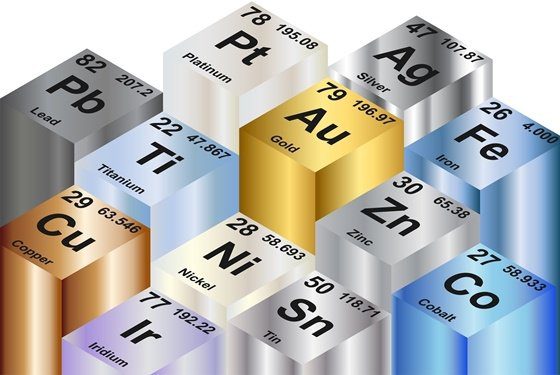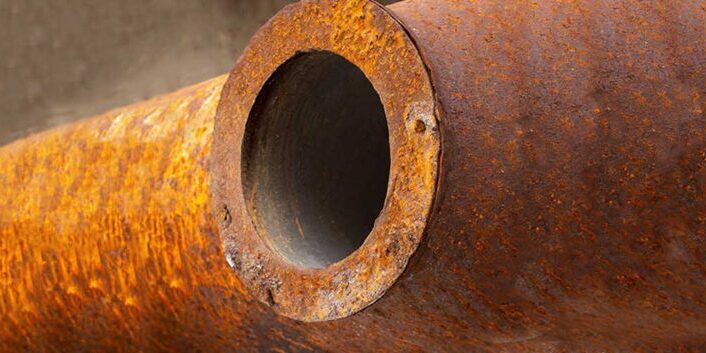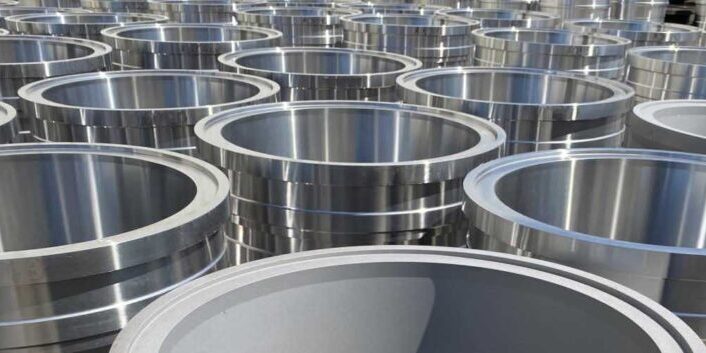Blog Material Applications: Heat Resistance
By: Dave Olsen

By way of definition, heat-resistant applications typically occur above 1200°F/670°C and require the use of materials that have enhanced resistance to oxidation and other environment-specific gases and mechanical property degradation. Performance in these high-temperature environments is indicated by acceptable levels of tensile strength, stress rupture life, and creep strengths that correspond to the required time of service.
Generally, material properties are reduced as temperature increases. This is particularly noticeable in carbon steel, a lightweight heat resistant material. Over the years, metal companies have developed alloy steels containing nickel and chromium that add significant improvements in strength and ductility, among other things. The most used materials historically in these applications are the alloys corresponding to ASTM A297 “H-series” cast stainless steels, although many proprietary alloys have gained favor in recent years.
The main groups of heat-resistant alloys are high chrome nickel austenitic alloys. These high-temperature metal alloys are also known as heat-resistant stainless steel, nickel-based alloys, cobalt chrome nickel-based alloys, and molybdenum titanium alloys.
In the case of high strength requirements at elevated temperatures, cyclical thermal exposure, or aggressive carbonaceous atmosphere, nickel-based alloys are typically selected. However, cobalt-based alloys may also be used. The primary tradeoff is usually economic. Comparing a high initial cost versus the life cycle cost of a conventional heat-resistant alloy will help to determine the best long-term value.
High-temperature metal alloy applications demanding heat resistant materials occur frequently in various industries. Those applications include power plants, mineral pyro processing (cement, lime, and iron ores, for example), waste incineration, petrochemical processing, steel and non-ferrous mills, metal processing including heat treating, and glass making/forming.
Often the first consideration in selecting an alloy for a high-temperature application is its strength at elevated temperatures. However, strength is not the only key consideration, since many high-temperature metal alloy applications occur in harsh corrosive environments such as chemical plants.
The relative strength of alloys is demonstrated on a short-term basis by conventional tensile testing at elevated temperatures. For an alloy’s performance over the long term, the designer would consider additional properties including stress rupture strength, creep strength, and/or thermal fatigue strength.
Tradeoffs to Heat-Resistant Alloys
In discussing applications of heat resistant castings, there are obvious tradeoffs between the life cycle cost of more expensive proprietary alloys and the more conventional alloys that may be encountered in the field. It may be helpful to classify the alloys using five frequently used categories. The following introduction provides some perspective and a general framework that may be used to classify alloys being considered for an application.
Stress Rupture
Typically, the first consideration in alloy selection is stress rupture strength. Rupture strength is the minimum stress that will cause failure in the equipment’s projected design life. For example, in petrochemical applications, this is 100,000 hours (11.4 years). These values are usually extrapolated from tests of shorter duration.
Creep
Creep is the strain, defined per unit of time, that occurs under stress at elevated temperatures. Creep occurs in many applications of heat-resistant castings at service temperatures. Over time, creep may lead to excessive deformation, which may further lead to fracture at stresses well below those that would cause a fracture in a tensile test at the same temperature.
Thermal Fatigue
Components that will experience thermal cycling or thermal shock during service require consideration of thermal fatigue. Fatigue is the condition in which alternating loads result in failure in shorter times and at lower stresses than would be expected under constant load. Thermal fatigue is the condition in which the stresses are primarily due to hindered expansion or contraction. Those may be caused either by external constraints, or by thermal gradients within the component. The selection of alloys for this type of service is still based primarily on experience, and is one of the areas in which technical metallurgical advice will provide value to users.
Thermal Expansion
Another important selection consideration is thermal expansion. For example, adjoining parts must expand and contract at the same rate or one may crack. Invar, for example, experiences very low thermal expansion, and is therefore used in high precision molding dies. There are many other examples of matching materials to each other or to the specifications of the application. Your metallurgical advisor can help manage that, too.
Welding
Not all applications will require that the component is to be welded, but special consideration must be given when the application is one in which a welded assembly is required. For instance, certain nickel alloys and cobalt alloys are very difficult to weld, so the tradeoff between the properties those materials can deliver and the ability to create the final product is paramount.
Desirable Characteristics of Heat-Resistant Alloys
- Low material and processing costs consistent with acceptable high-temperature life in the application.
- Low oxygen, nitrogen and hydrogen contents.
- High ductility, fatigue strength and toughness at room temperature.
- High resistance to oxidation in applications requiring exposure to air or steam at elevated temperatures.
- Small decrease in strength at elevated temperature.
- High resistance to products of combustion or gaseous chemical products at elevated temperatures.
- High resistance to thermal shock during heating or cooling.
- High fatigue strength at elevated temperatures.
- High creep strength under dynamic loading at elevated temperatures.
- High modulus of elasticity at application temperature and/or low thermal expansion.
- Adequate weldability.
- Moderately large grain size to enhance stress rupture strength.
Conclusion
High-temperature metal alloy applications and environments vary. Understanding the stresses that components will face and balancing those with the material properties of various alloys will deliver cost-effective solutions. For instance, a lightweight heat-resistant material might seem desirable, but in certain environments that would be a poor choice. Speak with an expert at MetalTek today, to help guide your project in the correct direction.



